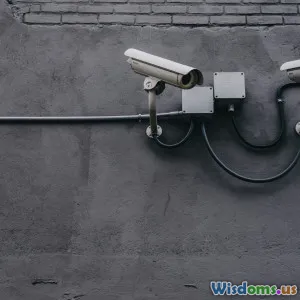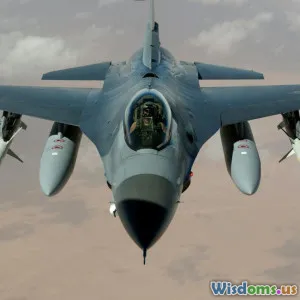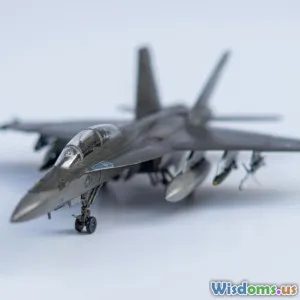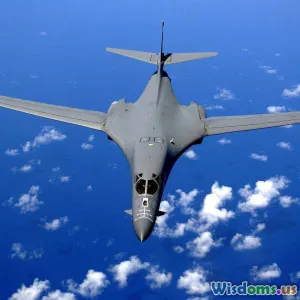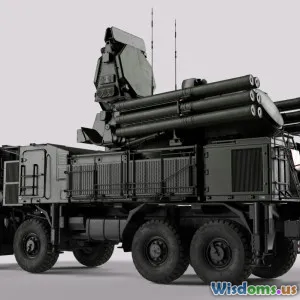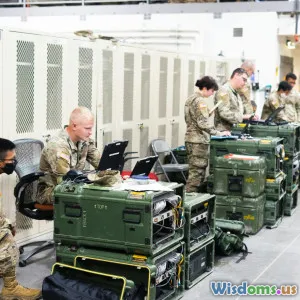
Will Quantum Sensors Make AntiMissile Systems Unstoppable by 2030
10 min read Exploring how quantum sensor technology could revolutionize missile defense systems by 2030, potentially making them nearly unstoppable. (0 Reviews)
Will Quantum Sensors Make AntiMissile Systems Unstoppable by 2030?
The race to develop near-perfect missile defense technologies is intensifying as geopolitical tensions and rapid advancements in missile technology ripple across nations. Among emerging technologies, quantum sensors have emerged as potential game changers that may redefine how anti-missile systems detect, track, and neutralize threats. But will quantum sensors elevate these systems to an unstoppable status by 2030? This article dives deep into the science, the present capabilities, real-world experiments, and the broader security landscape to understand the plausibility and consequences of this transformative leap.
Introduction: The Promise of Quantum Sensing in Defense
Traditional missile defense systems rely heavily on radar, infrared sensors, and satellite tracking to detect and intercept ballistic and cruise missiles. These conventional sensors often contend with environmental challenges, limited resolution, signal jamming, and the increasingly sophisticated missile technology designed to evade interception.
Quantum sensors leverage the properties of quantum mechanics—such as superposition, entanglement, and interference—to achieve levels of sensitivity and precision unimaginable by classical sensors. For example, quantum accelerometers and gravimeters can detect minute variations in gravitational fields, and quantum magnetometers boast unparalleled magnetic detection threshold levels.
With threats evolving swiftly, can the integration of quantum sensors turn anti-missile defense into an undefeatable shield, effectively making missiles irrelevant by 2030?
Quantum Sensors: What Are They and How Do They Work?
Understanding Quantum Sensing Principles
Quantum sensors exploit delicate quantum states of matter—usually atoms, ions, photons, or superconducting circuits—to measure physical quantities such as acceleration, rotation, magnetic and gravitational fields with exceptional precision. This sensitivity stems from the fact that quantum states are influenced immediately by surrounding environmental changes, making them excellent measurement probes.
For instance, atomic interferometers use clouds of ultracold atoms trapped with lasers to detect accelerations or rotations by observing phase shifts between atomic wave packets created in superposition. These enable highly precise inertial measurements without relying on GPS.
Current Implementations in Military Sensing
Research institutions and defense laboratories worldwide—from the U.S. Army Research Laboratory to China's Quantum Experiments at Space Scale (QUESS)—have been developing quantum sensors focusing on accelerometers, gravimeters, and magnetometers aimed at navigation, detection, and communication enhancements.
Examples include the DARPA Quantum-Assisted Sensing and ReadOut effort targeting next-generation inertial navigation for submarines and aircraft, and the UK’s National Quantum Technology Programme accelerating quantum magnetometer development to enhance defense capabilities.
How Quantum Sensors Could Revolutionize Anti-Missile Systems
Enhanced Detection and Tracking
One of the biggest challenges in missile defense is identifying and tracking missiles early and accurately, often within cluttered, electronically-dense battlespaces. Quantum magnetometers can detect subtle magnetic anomalies from missile electronics even when traditional radars are deceived or masked by stealth materials.
Moreover, quantum gravimeters might detect changes in gravitational fields caused by missile movement underground (e.g., underground launchers). This opens paths to detect not just missiles in the air but launch activities even before missiles deploy.
Collaborations such as the EU’s QUANTUM Flagship consortium highlight projects exploring how quantum sensors can passively detect threats with unprecedented low false-alarm rates.
Robustness Against Electronic Countermeasures
Missile defense is a cat-and-mouse game: as interception methods improve, offensive missiles are designed with radar jamming and sensor evasion in mind.
Quantum sensors resist many forms of electronic jamming as they are less reliant on traditional electromagnetic emissions. Sensors based on quantum entanglement can detect disruptions in quantum states caused by interferers, providing resilience against spoofing.
This could drastically increase situational awareness and reduce reliance on traditional radar-based sensing vulnerable to electronic warfare.
Precision Targeting and Timing
Using quantum clocks—based on atomic transitions that are more stable than current timing systems—anti-missile systems could synchronize interception more precisely, improving kill probabilities. Accurate timing is crucial when intercepting supersonic or hypersonic missiles traveling thousands of kilometers per hour.
For example, optical lattice clocks developed by NIST (National Institute of Standards and Technology) exhibit timekeeping accuracy to a quintillionth of a second. Such clocks can link sensor data in real-time with unmatched accuracy, refining tracking and interceptor guidance.
Challenges and Realistic Limitations in Deploying Quantum Sensors
Technical Maturity and Integration
Despite the alluring promise, many quantum sensors are still at experimental or early prototype stages. Quantum devices often require ultra-cold environments and sensitive setups susceptible to vibrations and environmental noise—conditions challenging to maintain in fielded military hardware.
Integrating quantum sensors with existing missile defense architectures demands substantial redesigns and validation to ensure reliability under combat conditions.
Cost and Scalability
Quantum sensor technologies require expensive materials, such as lasers, vacuum chambers, and specialized electronics, which can limit initial deployment to high-value platforms or fixed installations.
Scaling production and ruggedizing quantum devices for harsh operational environments—such as on warships, satellites, or mobile units—is an ongoing challenge.
The Offense-Defense Dynamic
Historically, improvements in missile defense prompt commensurate advances in offensive missile technologies—stealth coatings, deployment of decoys, subliminal or unpredictable trajectories (e.g., hypersonic glide vehicles).
As quantum sensors enhance detection, adversaries may retaliate by investing in technologies to evade or overwhelm sensors, for example, through quantum-based stealth techniques or electronic counter-countermeasures crafted specifically for quantum detection.
Global Race: Nations Investing in Quantum Anti-Missile Technology
China, the United States, and European nations have prioritized quantum technology as a pillar of their national security.
-
United States: The Department of Defense’s Strategic Capabilities Office (SCO) and DARPA are spearheading efforts to integrate quantum sensors into missile defense and navigation.
-
China: Embarking on ambitious quantum satellite projects and terrestrial quantum networks to leverage quantum advances in defense sensing, aiming for battlefield superiority.
-
Europe: The Quantum Technology Flagship initiative channels billions of euros into advancing quantum sensors, with several projects focused on aerospace and defense applications.
These investments signify a geopolitical emphasis that might fast-track quantum sensor-enabled missile defenses before 2030.
Ethical and Strategic Implications
Deploying near-perfect missile defenses could destabilize traditional deterrence doctrines, such as Mutually Assured Destruction (MAD), potentially inciting offensive arms races as nuclear-armed states seek assured second-strike capabilities beyond interception.
Moreover, reliance on unbreakable defense systems could foster complacency or escalate regional arms buildups, emphasizing the need for international dialogue on quantum sensor use in military systems.
Conclusion: Will Quantum Sensors Make Anti-Missile Systems Unstoppable by 2030?
Quantum sensors indeed hold revolutionary potential for anti-missile defenses by 2030, promising leaps in detection precision, resilience to jamming, and timing accuracy. Ongoing research, substantial funding, and strategic imperatives strongly push towards field deployment in the coming decade.
Nonetheless, significant technical hurdles, integration complexities, and the adaptive offense-defense dynamic temper expectations that anti-missile systems will become truly unstoppable.
Instead, quantum sensors are more likely to enhance anti-missile systems' capabilities markedly. They will reduce vulnerability, extend detection horizons, and improve interception odds but are unlikely to create invincible shields. Additionally, new countermeasures will emerge, maintaining the perpetual balance between offense and defense.
Ultimately, quantum sensors represent another critical frontier in the evolving landscape of strategic military technology, reinforcing defenses but not rendering them invulnerable. For policymakers, scientists, and defense strategists, the race to responsibly harness these advances will shape the future security architecture profoundly.
References
- U.S. Department of Defense Quantum Science and Technology (QST) programs
- National Institute of Standards and Technology (NIST)
- DARPA Tactical Undersea Network Architectures (TUNA) and Quantum-Assisted Sensing initiatives
- European Quantum Technology Flagship reports
- Scientific American, American Physical Society reports on quantum sensing applications
Rate the Post
User Reviews
Popular Posts










